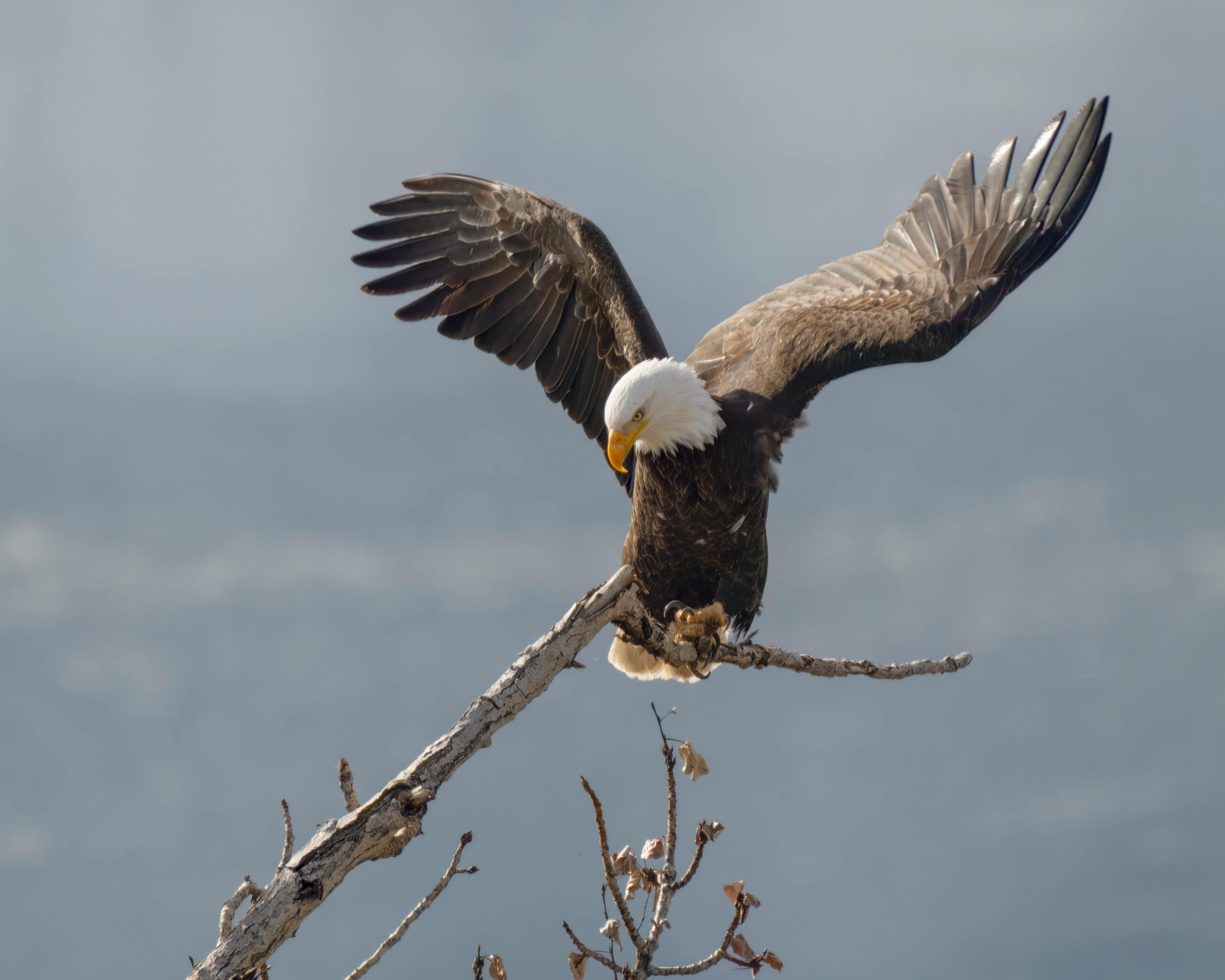Bald eagles are well-equipped to withstand the challenges of snowy environments, thanks to their insulating feathers, ability to regulate body temperature, and adaptations that allow them to continue hunting and nesting even in the harshest winter conditions.
Insulating Feathers and Heat Regulation
Bald eagles have a unique set of feathers that provide exceptional insulation against the cold. Their feathers are incredibly dense and can trap heat close to their bodies, allowing them to maintain a comfortable body temperature even in sub-zero temperatures. Additionally, bald eagles can control the position of their feathers, lifting and lowering them to regulate their heat output as needed.
One of the most remarkable adaptations of bald eagles is the single patch on their bellies that is not covered in feathers. This bare spot allows for easier heat transfer from the parent bird to the eggs during incubation, ensuring the embryos develop properly even in snowy conditions.
Surviving Extreme Temperatures
 Image source: Pexels by Frank Cone
Image source: Pexels by Frank Cone
Bald eagles are capable of withstanding temperatures as low as -30 degrees Fahrenheit (-34 degrees Celsius) and can thrive in areas with snow cover for up to six months out of the year. Their ability to fly and hunt in snowy conditions is a testament to their impressive adaptations.
During the incubation period, bald eagles will carefully rotate their eggs every half hour to ensure even heating and proper embryo development. They also strategically build their nests in locations that provide some protection from the elements, such as in the crook of a tree or on a rocky outcropping.
Behavioral Adaptations for Snowy Environments
In addition to their physical adaptations, bald eagles have developed behavioral strategies to survive in snowy conditions. One of the most important is their tendency to build their nests near open water sources, which allows them to continue hunting and fishing even when the ground is covered in snow.
Bald eagles also have the ability to store food in their nests or nearby caches, providing them with a reliable source of sustenance during times when hunting is difficult due to heavy snowfall or prolonged cold spells.
Challenges Posed by Extreme Weather Events
While bald eagles are generally well-equipped to handle snowy conditions, they can still face challenges during extreme weather events. Heavy snowfalls can make it difficult for them to fly and hunt, and prolonged cold spells can make it harder for them to find food.
However, with their incredible adaptations and resourcefulness, bald eagles are generally able to overcome these obstacles and continue to thrive in snowy environments.
Conclusion
Bald eagles are truly remarkable birds, capable of surviving and thriving in some of the harshest winter conditions on the planet. Their insulating feathers, heat regulation abilities, and behavioral adaptations make them well-suited to withstand the challenges of snowy environments, ensuring their continued success as a species.
References:
– USA Today, “Bald eagle buried up to hear head in snow protecting eggs during storm” https://www.usatoday.com/story/news/nation/2023/02/27/bald-eagle-buried-protecting-eggs-minnesota-snow-storm/11357885002/
– Audubon, “Bald Eagle Parents Get Buried By Snow While Incubating Eggs” https://www.audubon.org/news/bald-eagle-parents-get-buried-snow-while-incubating-eggs
– Reddit, “Bald eagle protecting two eggs during a snow storm” https://www.reddit.com/r/Damnthatsinteresting/comments/fgy3sn/bald_eagle_protecting_two_eggs_during_a_snow_storm/

